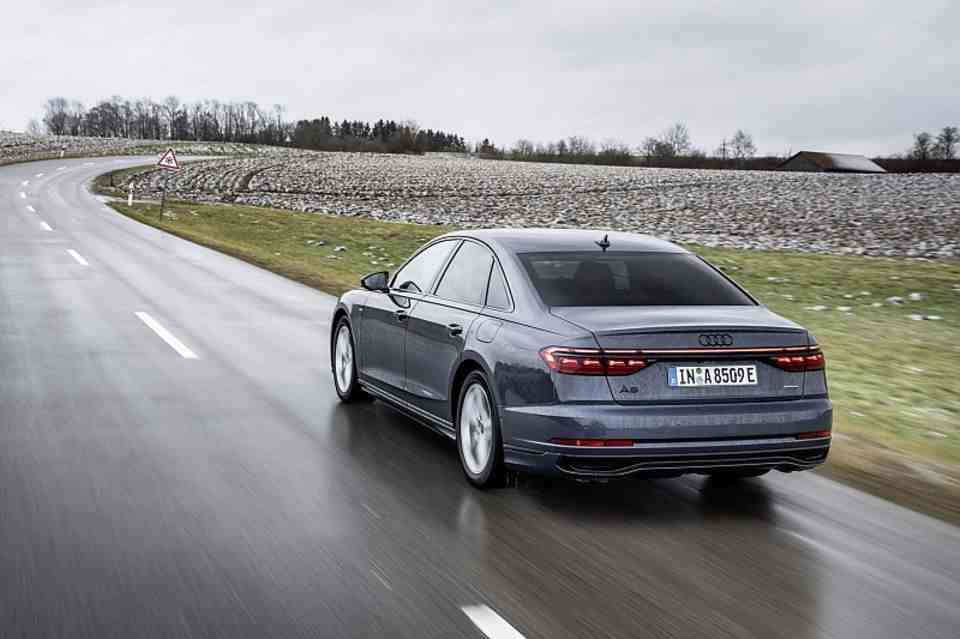environmental bonus
Ministry wants to end funding for plug-in hybrids at the end of 2022
According to a proposal from the Federal Ministry of Economics, the subsidy for plug-in hybrid vehicles is to end on December 31, 2022
© Christoph Soeder / DPA
That’s a surprise: Buyers of plug-in hybrid vehicles will soon no longer receive government subsidies. If the Ministry of Economic Affairs has its way, the environmental bonus should expire at the end of 2022.
Although plug-in hybrids also have an electric motor, they cover most distances with a combustion engine. The Federal Ministry of Economics therefore wants to cancel state subsidies for plug-in hybrid vehicles – and faster than previously planned. The subsidies for vehicles with a combination of electric and combustion engines are to expire at the end of the year – contrary to what was stipulated in the coalition agreement.
This emerges from a letter from Parliamentary State Secretary Michael Kellner (Greens) to members of the traffic light coalition, which was available to the German Press Agency. The “Frankfurter Allgemeine Zeitung” reported about it first.
Specifically, the subsidy rates for purely battery-electric vehicles are to be degressive from January 1, 2023 to 2025, as provided for in the coalition agreement, i.e. gradually falling. The funding for plug-in hybrid vehicles ends on December 31, 2022. A subsidy for these vehicles depending on the electric mileage would have led to “disproportionately high costs” and was therefore rejected.
Funding only if the climate protection effect is positive
The coalition agreement states that the funding for electric vehicles and plug-in hybrids should be fundamentally reformed in such a way that from January 1, 2023 it will only be issued for vehicles that have a proven positive climate protection effect – which only has an electric drive component and a electrical minimum range will be defined.
Environmental and climate organizations have long criticized government funding for plug-in hybrid vehicles. It is disputed how much they are really driven in purely electric mode. Plug-in hybrids are often heavy SUVs.
The proposals from the ministry of Robert Habeck (Greens) have not yet been coordinated within the coalition and are now to be submitted to departmental coordination within the federal government.
Plug-in hybrid: Run on government subsidies for e-cars
In mid-2020, a run on state e-car subsidies began when the purchase bonus (“environmental bonus”) that had been valid until then was increased by an “innovation bonus”. The federal government doubled its subsidy, while the manufacturers’ price reductions remained unchanged. This should drive the market ramp-up of electric cars, which play an important role in the federal government’s climate protection concept.
Buyers of purely electrically powered electric vehicles currently receive a subsidy of up to 9,000 euros. For plug-in hybrids, there are up to 6750 euros.
The competent Federal Office for Economics and Export Control received funding applications for around 625,000 vehicles last year. That was more than twice as many as in 2020.
According to Kellner’s letter, the subsidy rates for purely electrically powered vehicles are to be gradually reduced starting next year. The federal share should therefore still be 4,000 euros in 2023, and 3,000 euros in 2024 and 2025.
Assessment basis soon gross price with special equipment
In addition, from January 2023 the assessment basis for determining the amount of the subsidy rates for pure electric cars should be the total vehicle price (gross) including optional extras – previously it was the net list price of the basic model without optional extras. In the future, the subsidy cap will be EUR 65,000 for the total vehicle price. This should continue to ensure social balance “with limited funding and increasing numbers of applications”.
The minimum holding period is to be increased from six to twelve months, as the letter goes on to say. This is intended to prevent subsidized cars from being resold shortly after the minimum holding period has expired in order to make a profit. This is primarily aimed at commercial sellers.


